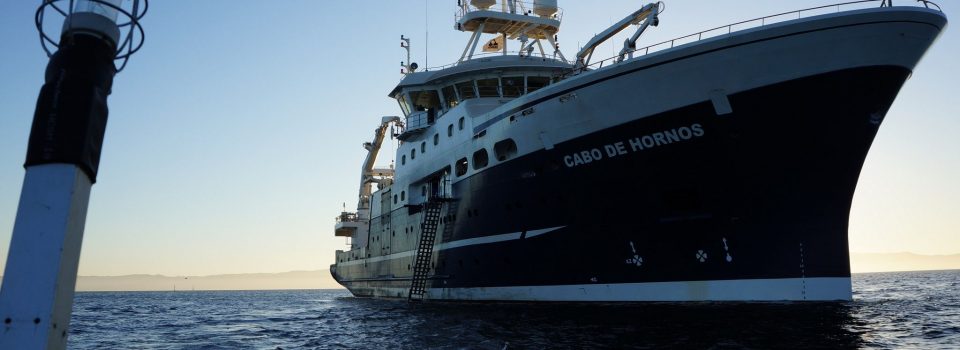IFOP evaluates the stock of southern hake, hoki and southern blue Whiting.
August 12th, 2016
The study will be carried out on board M/V Cabo de Hornos. The project chief is the fishing engineer, Mr. Alvaro Saavedra of Instituto de Fomento Pesquero.
On August 1, morning time, M.V. Cabo de Hornos sat sailed from Valparaíso port for a scientific cruise, which will make research on southern hake, hoki and southern blue Whiting. The area of study includes from Guafo Island to the north of Strait of Magellan.
It will run from 1 to 31 August .The goal of this expedition is to evaluate the spawning stock of southern hake, hoki and southern blue Whiting in the outer waters between Los Lagos region and Magallanes, in order to generate biological knowledge, such as size, age, sexual maturity, food and accompanying fauna, besides the condition of resources.
The cruise includes oceanographic stations, which will be held with the oceanographic rosette, an instrument that measures oxygen, chlorophyll, zooplankton, phytoplankton and nutrients from the ocean.
AGS-61 “Cabo de Hornos”
Cabo de Hornos is a research vessel of last generation built during the first government of President Michelle Bachelet: It is managed by Armada de Chile, known for being a silent ship that meets the acoustic standard ICES 209, which allow the vessel to pass 20 meters above shoals of fish without being perceived by them. Besides, has a retractable keel where the fishing sensors are installed.
Its labors are focused mainly on operational oceanography for the study of climatic phenomena and ocean-atmosphere interaction, in addition to geological oceanography for the study of seabed and subsoil, geophysical oceanography for underwater studies related to continental drift and tectonic plates, bathymetric raising of the seabed, hydro acoustic pollution assessment and evaluation of biomass and fishing for species sampling.
